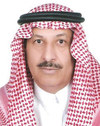The annual Haj pilgrimage and the Saudi capabilities

Pilgrimage is the fifth and last pillar of Islam. Every Muslim is required to perform Haj once in his or her lifetime. But if a person can’t afford it or is not physically capable, then he or she is not obligated to perform Haj. If an elderly or a sick Muslim can’t perform it, then he or she can ask a capable individual to go to Makkah and perform Haj on his or her behalf. This shows how Islam is a religion of mercy.
We have seen and read in every paper around the world about the annual Haj in Makkah, Saudi Arabia, and the Haj reports are followed by many people of different faiths. Most of the reports talk about the details of performing Haj. But, few talk about the amount of burden Saudi Arabia is taking to ensure the safety of pilgrims. Not long ago, a Westerner who has never been to Makkah asked me a question. How does Saudi Arabia do it? He always enjoys watching the Haj on TV. He admires watching the smooth movement of millions of pilgrims who come from more than 150 countries and speak many languages. We see the young and the old. The Western man and I talked about the preparations of events when millions of people are in one place and how they are managed. Haj is an annual event that brings millions of Muslims from around the world to Saudi Arabia. And yes, the question many people ask is: What does Saudi Arabia do to accomplish the impossible?
Getting ready for the Haj seasons starts few months before the lunar month of Dul Hijjah. It is the last month of the year. The first step is to announce the number of people coming to perform Haj from all over the world. The Saudi embassies around the world handle the task of providing Haj visas for pilgrims. And then many countries send representatives to discuss with their Saudi counterparts about the preparations to receive the pilgrims. And then the arrival of the pilgrims to Saudi Arabia begins.
Saudi Arabia hosts Haj events every year. The pilgrims are in the millions and they need to be moved from one place to another in a very short period of time. They have to be in the Grand Mosque for (Tawaf) and (Saie) then they have to be in Muzdalifah, Mina and the Grand Mosque again. All these movements have to be done at a specific time in a specific place. This is not an easy task and requires years of preparation and experience.
The government of Saudi Arabia prepares health care system, accommodations and many other requirements well in advance. During Haj, thousands of doctors, nurses, civil defense, security people and helicopters — to oversee the smooth movements of millions of pilgrims — are in place long time before the arrival of the pilgrims. The Health Ministry has around 200 ambulances and 25 hospitals in and around the holy sites.
During the Haj, Saudi Arabia is fully mobilized to encounter any unlikely event. Firefighters and disaster management people are on full alert. Airports are staffed to handle the influx of pilgrims. The Saudi government spends billions of riyals to make the Haj as smooth as it can be. The amount of water consumed by the pilgrims is in the millions of cubic meters.
Haj is becoming a very difficult challenge for the Kingdom. This is why the government doesn’t spare any effort to help the pilgrims fulfill the obligation of the Haj, the fifth pillar of Islam. And Custodian of the Two Holy Mosques King Abdullah is even hosting thousands of Muslims from places where it is difficult for people to perform Haj for any reason. Their entire trip is paid by the king.
Many people around the world, Muslims and non-Muslims, are very impressed to see the Grand Mosque filled with millions of worshippers around the Kaaba and they line up for the prayer in less than one minute. Haj is one of the important lessons for any Muslim. It teaches you how to be humble. All pilgrims wear the same kind of cloths, rich or poor. And it teaches you the importance of being together and to love each other regardless of the color of your skin or your nationality. During Haj, people feel how close they can be to Allah (SWT). Muslims during Haj learn how to share the joy of giving. Haj teaches Muslims the importance of respecting the time. Haj is where eastern Muslims meet with Western Muslims. Haj teaches Muslims how small they are when they see themselves in a crowd of millions and it shows them how to adapt to being together with no social divide.
Haj is an annual religious practice and Saudi Arabia has the honor to serve the pilgrims for tens of years. And during Haj, it is important for pilgrims to show the world how Islam is a religion of peace not a religion of violence. The whole world is watching the Muslims performing Haj, but, the most important is to put the teachings of Islam in their daily life. Islam is not just to be practiced in a mosque, it is the way Muslims do in their daily life.










































